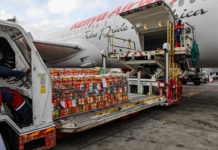The latest announcement from the Department of Mineral and Petroleum Resources has brought a welcome reprieve for households, businesses, and the broader economy.
From the 5th of November, both petrol and diesel prices will decline — with petrol down by 51 cents per litre, while diesel will fall by 21 cents per litre for 0.05% sulphur and 19 cents per litre for the premium 0.005% sulphur grade. Illuminating paraffin will also decrease by 1 cent per litre.
The new retail prices translate to R19.13 per litre for diesel with 0.05% sulphur content and R19.20 for the premium grade, marking a 6% reduction from the 2025 peak of R20.34 per litre recorded in February.
Petrol prices will now stand at R21.12 per litre for 93 octane and R20.29 per litre for 95 octane. These reductions, although modest, offer tangible relief to consumers grappling with rising living costs.
Global and Local Drivers of the Decline
The November fuel price adjustment reflects the influence of both global and domestic market dynamics. On the international front, benchmark crude oil prices have been under pressure due to excess supply and subdued demand associated with weak global growth.
Average international product prices softened during the review period between September and October, contributing significantly to the downward adjustment.
The appreciation of the rand added to the relief, strengthening to its best level in months at around R17.29 to the US dollar. This combination of a firmer local currency and softer global oil prices provided the necessary conditions for a meaningful cut at the pump.
In the broader oil market, however, price volatility remains a concern. Crude oil prices initially slipped to around $60 per barrel but have since recovered to approximately $65 per barrel. This rebound has been supported by OPEC’s decision to pause output growth at the start of 2026, slow production recovery among member countries, and continued geopolitical risks. The ongoing Russia-Ukraine conflict and additional sanctions on Russian exports have constrained global supply, limiting further price declines.
Despite these developments, the global oil market is expected to remain within a narrow trading range for the time being. Yet, volatility is likely to persist as economic uncertainty, policy shifts, and geopolitical factors continue to shape supply and demand.
Macroeconomic Implications for South Africa
For South Africa, the combination of lower international oil prices and a stronger rand offers important near-term benefits. The cut in fuel prices will ease transport costs, with the potential to slow the pace of inflation and support consumer confidence.
Headline consumer inflation in September edged up marginally to 3.4% from 3.3% in August, while food inflation continued to decelerate to 4.4%. The latest fuel price adjustments are therefore well-timed to help stabilise inflation in the months ahead.
Nevertheless, risks remain. The rand could face renewed pressure if global commodity prices weaken further or if expectations around the next US Federal Reserve rate cut shift unfavourably.
Lower gold prices, in particular, weigh on South Africa’s terms of trade, while higher oil prices could reverse recent gains. However, persistent uncertainty in US markets, prudent local macroeconomic policy, and ongoing structural reforms should provide a measure of support for the local currency.
Encouraging Outlook for Agriculture
The timing of the fuel price cuts coincides with the start of South Africa’s new summer crop production season, offering a boost to the agricultural sector. Some regions have already begun planting, while others are preparing for their planting window to open.
Diesel, a key input in agricultural operations, is widely used for land preparation, irrigation, and transport. Lower diesel prices will therefore reduce production costs at a critical stage of the farming cycle.
Following an excellent 2024/25 production season — during which total grain and oilseed output rose by 30% year-on-year to over 20 million tonnes — the outlook for 2025/26 remains positive. Forecasts suggest favourable weather conditions, supported by the anticipated return of the La Niña pattern. The National Crop Estimate Committee expects a 1% increase in planted area to 4.4 million hectares, reflecting farmers’ optimism and willingness to expand production.
The lower fuel price environment should help sustain this momentum by improving cost efficiencies and supporting farm profitability. This is especially significant for grain and oilseed producers, for whom diesel costs represent a substantial share of total input expenditure.
A Window of Opportunity for Households and Businesses
The relief at the fuel pump offers South Africans an opportunity to strengthen their financial positions. Lower transport costs can free up disposable income that may be redirected toward debt repayment, savings, or essential expenses. For businesses, particularly those in transport, logistics, and agriculture, reduced fuel costs can improve margins and competitiveness.
While the price reductions may not fully offset the pressures of higher living and operating costs, they provide meaningful short-term relief. Maintaining this positive momentum will depend on continued stability in global energy markets, a resilient rand, and prudent domestic fiscal and monetary management.
By Koketso Mano, FNB Senior Economist, Ester Ochse, Product Head, FNB Integrated Advice andFuel Price Cuts FNB Senior Agricultural Economist








